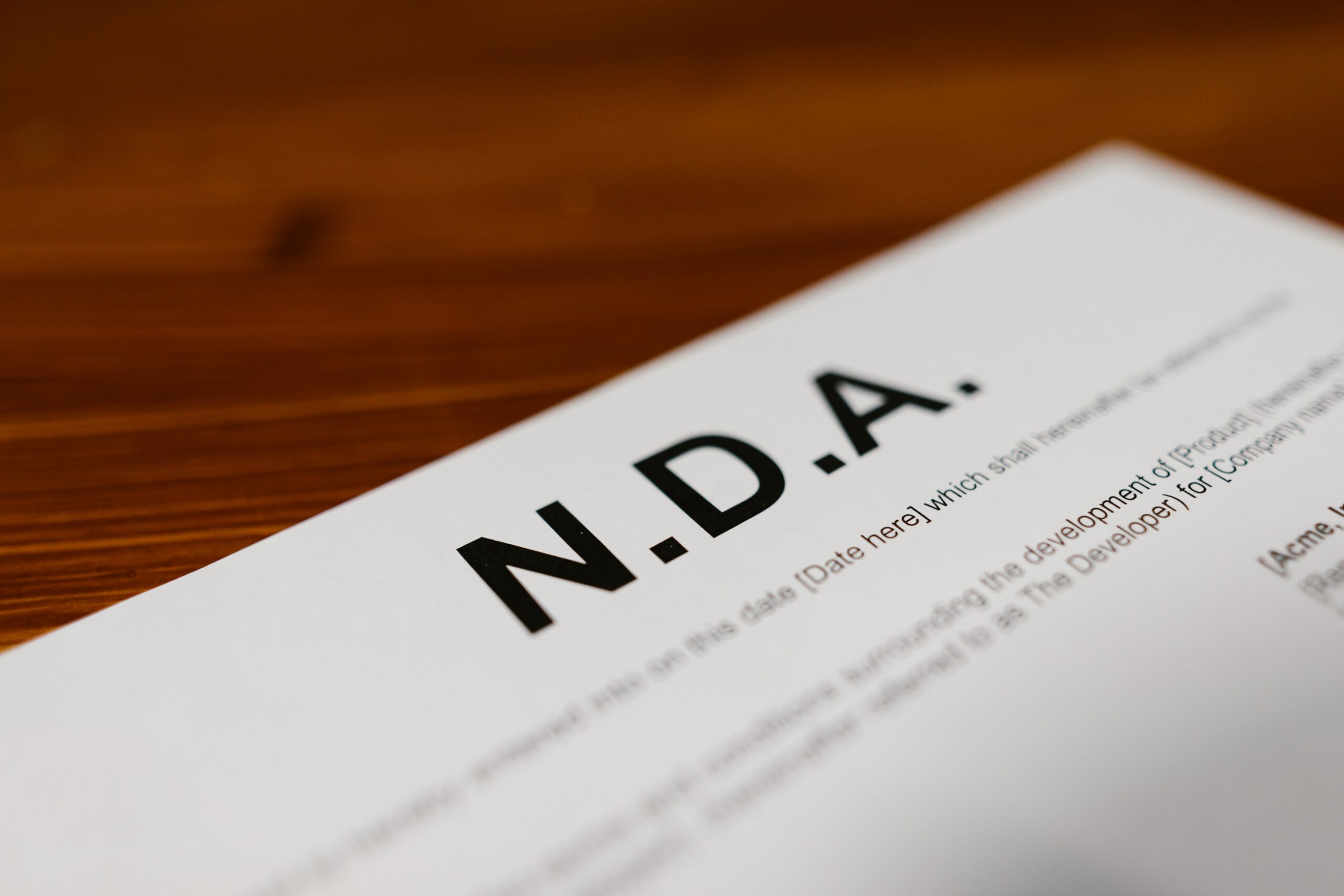Have you ever met a new design client who assures you that they will be the easiest client you have had? Now, tell us: how many times has that actually been true? As you probably already know, first impressions can be deceiving. Clients in the interior design industry are no exception. Even if your client seems great at first, it is necessary to make sure that you have fundamental interior design business contracts in place before you accept any job. These protections are in the form of a binding agreement between you and your clients. They help you avoid confusion, never-ending projects, profit loss, and legal action for your business.
Below, we have outlined 5 types of contracts that will help you protect your business. Review them carefully and make sure you have these protections in place to save yourself from a lot of wasted time and frustrating situations!

1. Preliminary Agreement
Your relationship with a client should always begin with a preliminary agreement, which is also known as the initial consultation. This type of agreement outlines the services you plan to provide during the consultation, as well as any fees associated with them.
If you are just starting out in the industry, one way to build rapport with prospective clients is by offering the initial consultation for free. But, a word of caution: remember that your time is still valuable. There is a lot of behind-the-scenes work that clients don’t see before and after the initial consultation, so be wary of providing too much of your time at no cost.
We typically recommend charging a flat fee between $200 to $400 in the preliminary agreement. This fee is meant to reflect the value of time spent selling yourself and your design concepts, as well as putting together a roadmap and contract for the project.
2. Contract
After you have met with clients for an initial consultation, you should make sure that you have a thorough contract in place. Clients never seem like they will be crazy at first, but the contract is a necessary precaution. It will save you from getting stuck in projects drawn out by indecisive clients, and it will protect your business from loss of profit and potential legal action.
The most successful contracts strike the right balance between clarity and concision. Your contract should adequately spell out your policies, but it should also not be so long that clients cannot possibly absorb all of the information you present. To help you get started, make sure that your contact covers these main points:
- Fee Schedule: a list of all possible fees that the client could incur during their project
- Maximum Hour Allocation: the maximum amount of hours that you will devote to a project for the amount that the client paid
- Additional Fees: how and when you will charge for additional services. This might include an explanation of the hourly rate that you will charge for things like project management and installations.
- Detailed Scope: what you are responsible for (and what you are not)
- Deliverables Provided: what items you plan to provide to your client
- Product Purchase Protections: who is responsible for damage claims, shipping, receiving, and installation and how these items will be addressed
- Litigation Agreement: what will happen when the contract is breached or broken
- Termination Agreement: how each party can legally exit the agreement
An interior design contract is essentially a purchasing agreement. The contents should reflect that, with a clear list of deliverables and a detailed scope of work that includes a budget range. To help ensure that there is no confusion for your clients, it is best to itemize the scope of work and break it down by each deliverable that you plan to provide.
The contract also provides a way to set boundaries with your clients. Make sure it states the maximum amount of time you are willing to spend for the amount that you were paid. It should tell your client exactly how you plan to charge them if the scope or timeline increases after the initial contract is signed.
For your own protection, you should specifically call out any parts of the project that involve third parties. It is important for your client to understand that there are some factors out of your control. You are not responsible for them. Common examples include shipping delays and backorders, client indecision, subcontractor work, and damage claims. You can read more about must-have protection clauses on our blog, but remember to always consult a lawyer before entering into a binding agreement.
Your contract is not only about protecting yourself. It also helps to protect your client and align their expectations for the project. Remind them that you have their best interests in mind, and use the contract as a tool to provide them with helpful information. It should mention time frames for submitting damage claims, your return policies, and an explanation of how backorders and delays will be handled.
We recommend charging a monthly flat fee for shipping and tracking, which serves as an insurance policy of sorts for your client’s orders. The monthly fee should cover time spent on order follow ups, damage claim submittals, resourced items, and other unforeseen circumstances that could affect the budget.

3. Alternative Agreement
While the contract is meant to provide thorough protection, sometimes priorities change once a project is underway. Situations like this call for an alternative agreement. An alternative agreement is a supplementary document that is added while a project is in progress. Similar to the contract, it should list the deliverables and scope of work that you plan to provide. However, it also serves as a record of changes to the scope of work and budget since the project began.
An alternative agreement is not always needed. However, if anything is changed after the contract has been signed, it becomes a necessity. Even if just one item changed, make sure to draft an alternative agreement and have your client sign it. It is always better to take precautions than to skip an important step and regret the consequences for your business later.
4. Subcontractor Agreement
Like an alternative agreement, a subcontractor agreement is not always needed for every job. Think of the subcontractor agreement as a form of insurance for your business. It is not necessary to create one if your client plans to pay a subcontractor directly for their work. However, if you plan to handle subcontractor payments for your client, you will need an agreement to make sure that everyone is on the same page. You do not want to be held liable for things that are out of your control.
The agreement should explain:
- How you plan to work with the subcontractor
- Pricing procedures and how you plan to handle payments
- Responsibilities of each party
It is also essential to collect Form W-9 for tax purposes, as well as a Certificate of insurance (COI), in the subcontractor agreement. Make sure that your business is listed as additionally insured on the COI. If a subcontractor causes any damage, the COI will provide your business with an extra layer of protection.
You can save time by crafting generalized subcontractor agreements that apply to every project. This way, they only have to be signed when you begin working with a new subcontractor. The most important thing to clarify is that you are not responsible for the subcontractor’s quality of work. This will help you avoid costly situations and legal action.
Let’s say that you hire a plumber to install a sink in a client’s kitchen. While the plumber is working, he carelessly makes a dent in the cabinetry. Your client is very upset and demands that someone pay for the cabinetry repairs. With a solid subcontractor agreement in place, your business will be protected. You will not have to absorb the cost or take on the consequences of the plumber’s poor workmanship. The plumber must assume responsibility for the execution of the final product that you hired him to install.

5. Non-disclosure Agreement
While non-disclosure agreements (NDAs) are not needed as often as the other types of business protections, it is still important to understand when and how you should use them. An NDA outlines what information can be shared by the parties who sign it. In the interior design industry, it is usually used to prohibit photography of private locations, custom products, and incomplete designs. It can also be used to protect client confidentiality, especially if you are providing services for high-profile individuals. An NDA may accompany the subcontractor agreement. If you plan to use one, make sure that you have a signed copy from everyone who works for you.
With these interior design business contracts in place, you can help to ensure that your client knows what to expect from the very beginning of a project. This will contribute to a much smoother design process. You will have greater peace of mind knowing that your business is protected, too.
However, we know that navigating the ins and outs of these agreements can be time-consuming and overwhelming on your own. If you need some additional guidance, consider onboarding 4Dbiz Founder and CEO, Shayna Rose, as your Fractional COO. The onboarding process includes up to 5 hours of customizable time. Shayna can help you review and refine your contracts, set financial goals, itemize your design process, and so much more. Schedule a call today to learn more about how to protect your business and expand your success!

